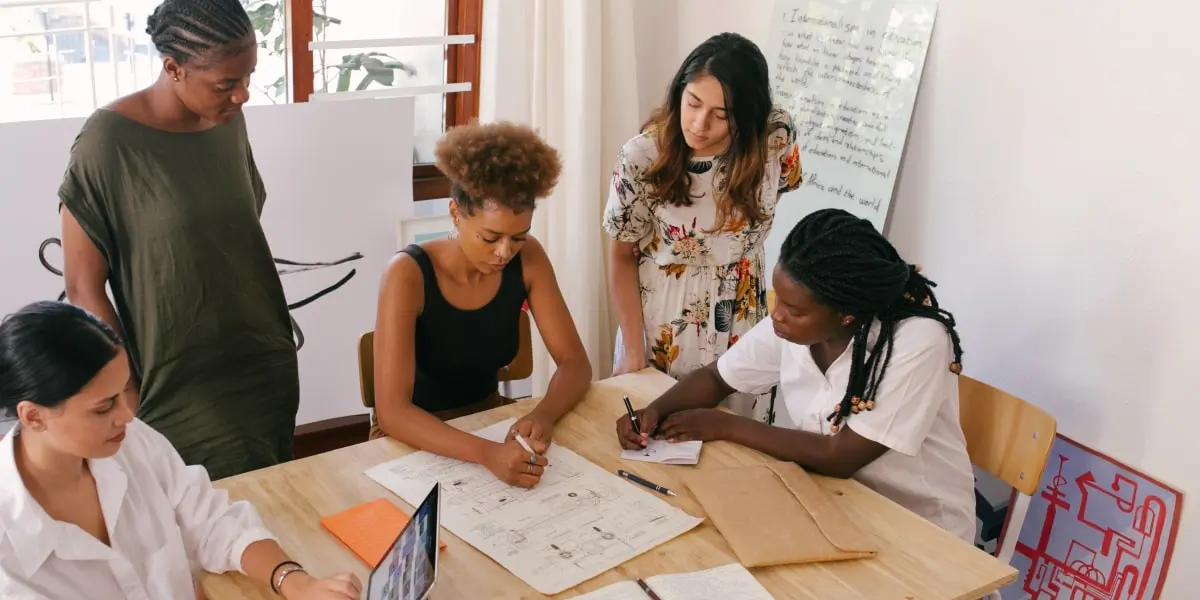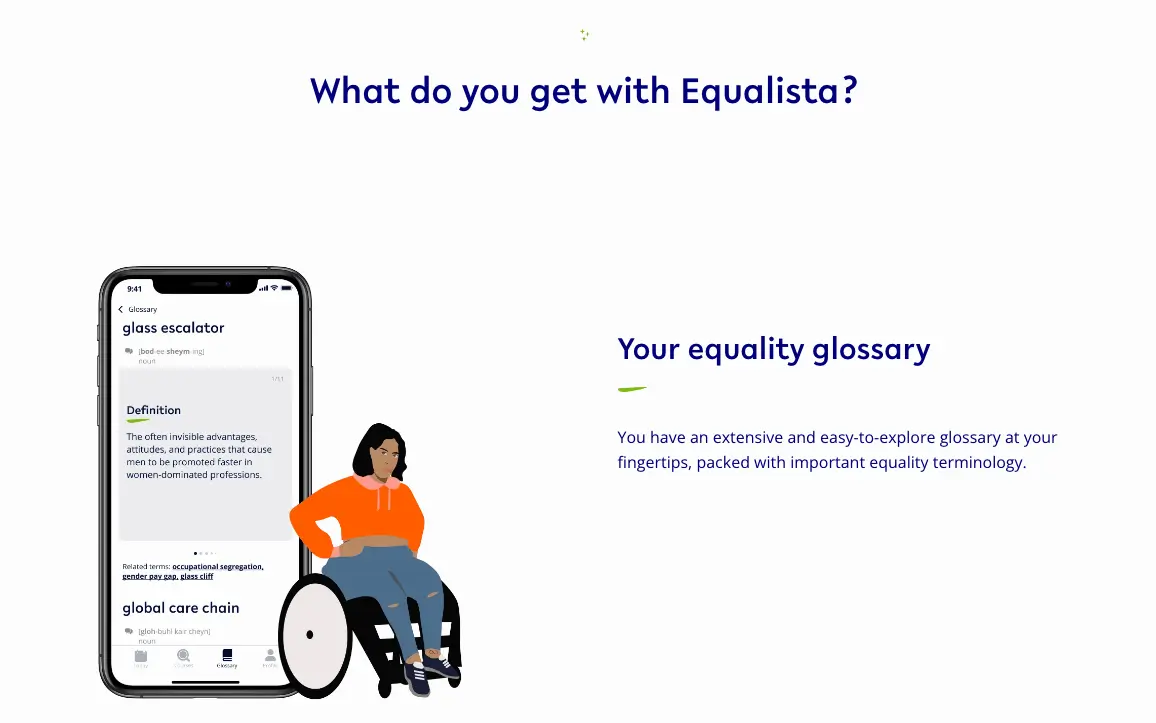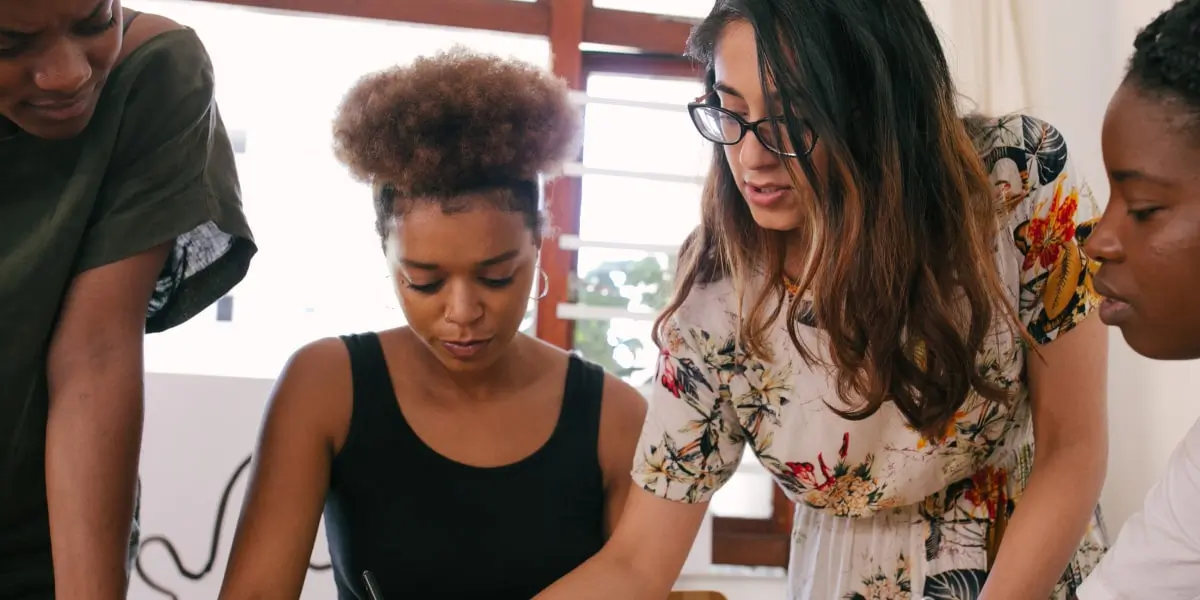June is pride month and while companies have transformed this time of the year into a branded holiday, true celebration and support of gay and trans people should not stop at a rainbow logo. Designing for inclusion is the key to putting that rainbow of intention into action.
Inclusive design is one of the most impactful ways in which UX designers, UX writers, UX researchers, and others on product teams can go beyond the rainbow logo to create better experiences for the LGBTQIA+ community well after a commemorative month. But how do you actually do inclusive design?
In this guide, I’ll briefly cover what it means to design for diversity and inclusion, and I’ll give you five of the best ways to start designing more inclusively right now. Here’s what we’ll cover:
- Designing for diversity and inclusion
- Inclusive design starts with hiring and team building
- Examine how you’re defining design problems
- Define (and follow) inclusive design principles
- Conduct inclusive UX research
- Attend to key touchpoints in the user journey
- Final thoughts and resources
1. Designing for diversity and inclusion
Inclusive design is the practice of intentionally considering and involving members of marginalized communities in the design process.
The goal of inclusive design is to design for diversity and inclusion through learning from people with a wide range of perspectives and lived experiences.
From the earliest days of UX design, the whole point of the gig has been to create experiences that work well for the people who engage with them. This should extend to all of the people who use a product, not just a narrow-defined few.
The public and private sectors should be designing for inclusivity
Digital solutions, websites, applications, or services created by or for public entities can all use inclusive user-centered practices to create solutions that deliver value to even more people than they may originally intend.
Given the diversity of users’ (and potential users’) lived experiences, it’s a must for UX designers working in the public sector to ensure that everyone can access and benefit from their solutions.
At the same time, private companies are likely to find it incredibly useful as well, for a myriad of reasons. Firstly they will be able to find opportunities to innovate by focusing on communities that often experience exclusion. They can also enlarge or retain their customer base, by doing something that does society good.
If you’re looking to read more about inclusive design, we’ve created a full article exploring the topic: A Beginner’s Guide to Inclusive Design.
You can also get an overview of the topic with this video from one of our live events:
2. Inclusive design starts with hiring and team building
If you want to design for inclusion it’s important to know this: Wrong teams make the wrong design decisions.
Product teams that build solutions that are meaningful for and respectful towards a given community are made up of two kinds of people:
- Members of that community
- Allies
This means that your design team should be made up of a full spectrum of humanity and that everyone on the team needs to work actively towards educating themselves and learning to be a good ally.
It’s important to remember that no single person can speak for the entire population with whom they share one or more identity traits, but having those identities represented will increase the chances of identifying opportunities to do better.
This is because even with good intentions, education, and experience designing for people that are different from us, we still carry our own subjective understanding of the world with us.
For example, getting more people with disabilities developing technologies is good for everyone, and will actually ensure that someone in the team knows what it’s like to need assistive technologies.
Allies, on the other hand, are important because throwing a diverse bunch of people into a hostile environment without structural support for them will not magically fix an organization’s inclusion problems.
It’s not to up to members of socially marginalized groups to educate the rest of the organization—unless, of course, you have explicitly hired them to teach your organization about queer history and struggles, racism, civil rights, transphobia, correct terminology, etc.
With the variety of free resources available there is no longer an excuse for not sharing pronouns at work, learning to use gender identity terms correctly or to not become a better white ally.
You might also find Buffer’s list of LBTQIA resources helpful, as well as this directory of queer designers.
3. Examine how you’re defining design problems

Photo by RF._.studio from Pexels
The opportunity to think about inclusion is there at all stages of the design process. A crucial moment early on is the problem definition.
When you define the problem users have, you make a decision about what to focus on in your design work. Step outside your usual process and start by questioning assumptions, hypotheses, and how business objectives impact people and society.
This will help you avoid spending way too much time designing solutions for the wrong reasons, and it can help you recognize exclusion before it’s passed on to everything that comes next in the design process.
Take the time to zoom out and get the big picture before you zoom in to define the right problem to solve.
Solving the right problem—the problem that, if solved, would benefit everyone—is truly the foundation of inclusive design.
4. Define (and follow) inclusive design principles
Product design principles are statements that guide designers as they make decisions at all stages of the UX design process.
These have the power to impact the quality and scope of your work, and ultimately, determine who your product will work for (and who it will exclude).
Considering the impact of design decisions and developing inclusive solutions is much easier when inclusion is embedded into the principles that support decision making.
What are the values of your organization, or those of the client you’re designing for? If inclusion is a core value for an organization, this needs to translate into the design principles that guide your process!
Take the time to define a set of design principles that will guide your process to more inclusive results. Start by checking out principles.design—an open source collection of design principles that can serve as a good source of inspiration for new, aspiring, or experienced designers.
5. Conduct inclusive UX research
We have written before on the CareerFoundry blog about how to conduct inclusive UX research and why it matters. Let’s review the key stages of user research that offer an opportunity to design inclusively.
Planning and recruiting
At this stage, you get to decide who you want to get insights from.
To ensure that you don’t miss out on a variety of unique perspectives, you could simply intentionally recruit participants according to criteria that might otherwise be overlooked during a typical screening that ignores minorities.
Your research study could of course also center on the experiences of folks that are not part of the dominant culture, exclusively investigating the specific needs of people of a certain gender, orientation, race, or any other aspect that you want to design for.
The effort needed to define the participants’ profile and reach out to them might seem burdensome, but failing to do proper UX research comes has a price.
To streamline the process, it might make sense to build a research panel to recruit more efficiently over time.
Conducting user interviews and usability tests
At this stage, you can finally learn from users directly. While asking the right questions is important, you can make the most of the research session and set your participants at ease by:
- Not rushing through your interview guide
- Being respectful
- Preparing your interview setup in a way that’s appropriate for running research with users who have disabilities
Finally, don’t forget to compensate research participants for their time.
To learn more, check out our guide about how to conduct inclusive user interviews.
Surveys
Surveys are a common tool to gain user insights on any topic at scale. Because larger sets of data allow for the analysis of correlations between demographics and attitudes, preferences or behaviors, it is common to include a few questions about the participant’s identity.
When collecting demographics about a product’s current or desired user base, catch this opportunity to make an LGBTQIA+ inclusive survey, and learn more about their particular needs.
6. Attend to key touchpoints in the user journey
During their customer journey, a user interacts with an organization several times using several different channels.
Each interaction is what we call a touchpoint between the customer and the organization. Let’s reflect on how inclusion/exclusion dynamics can take place at any of these common touchpoints:
- Sign-up and onboarding
- Forms
- User profiles
- Customer service
- Feedback surveys and customer reviews
- Marketing communications
Let’s look at each of these in a little more detail.
Sign-up and app onboarding
First impressions count.
If you want users to know right from the start that you see, value, and support them, sign-up and onboarding screens are just the right places.
And two of the most important ways to accomplish this? By using inclusive copy and inclusive imagery—this will help introduce people to your product and clarify what audience it’s really intended for.
By way of example, Equalista’s signup screens use illustrations of people with a variety of bodies, ages, abilities, gender presentations, etc.

Excerpt from Equalista app homepage
Forms
What information about users is relevant, permissible, or ethical to collect depends on the type of service provided through the app, the level of personalization of the experience that can be provided, and other factors.
And of course, an inclusive approach to storing, managing, displaying to others, and internally using this info is mandatory for any responsible and trustworthy digital product development team.
The best practices for asking questions in surveys also apply to designing the web forms to collect these data.
For example, if you’re going to ask for information about a user’s gender, sex, or sexual orientation, you should explain why you want to know this information, and offer inclusive options to choose from.
User profiles
It’s not unusual for apps to collect someone’s name, nationality, age, marital status, or picture. Either during account creation or later on, many apps ask users to share more information about themselves, and deciding thoughtfully what data is collected is already an opportunity to choose to include.
User profiles are usually where personal information is later retrievable and editable. Designing this section of the app offers the opportunity to consider, for example, the use case of someone whose personal situation changes.
Dutch bank Bunq allows users to specify which name they want to have displayed on the home page of the app when they are logged in and to others. So, if a trans person’s documents don’t reflect their chosen name, that is kept separate from the legal one.
They are also the first bank in Europe to issue Mastercard cards with a name that matches the user’s true identity.
Customer service
Sometimes, usually, when something goes wrong, app users will interact with a human that works at the company that develops the app.
The way customer service agents will treat the user (how they speak to them, whether they make any assumption about the person that contacted them, etc.) is still part of the product/service/brand experience and as such, should reflect your commitment to include everyone.
This can involve training the customer service team to become aware of how their unconscious bias impacts how they respond to different customer types.
It can also mean giving users the possibility to specify how they want to be addressed (for example by which names and with which pronouns) and ensuring that this is passed on to the systems used by customer service agents.
Feedback surveys and customer reviews
UX design is iterative in nature and as long as a product exists, its design is never done. Feedback surveys and user reviews are an opportunity to listen to what people’s experiences of a (live) product are like. Take these as opportunities to understand what you may have missed and who you may have ignored.
Marketing communications
While for a digital product designer the goal should always be to build a product that is inclusive, the best communication around that product uses its power to shift perspectives and make a statement regarding who the brand is committed to include.
Positive representation of marginalized groups in advertising normalizes the existence of these identities and deconstructs harmful stereotypes. Marketing communications offer both the opportunity to win customers by making them feel included and that of further empowering them in society.
Researchers can even track how social media can help LGBTQIA+ kids feel seen, and a recent study by GLAAD found that exposure to LGBTQIA+ representation in media and advertising leads to greater acceptance of the LGBTQIA+ community and that even consumers who are not a part of this community look favorably on companies that include LGBTQIA+ people in advertising.
7. Final thoughts and resources

Missed opportunities are often the result of personal bias and lack of awareness of the needs of those that are different from us and our closest social circle.
The great news is that you can catch more of these opportunities by cultivating a mindset and regular practices that put inclusion at the forefront of your design process. I hope this guide helps you get started with this.
Here are some more resources to learn about the many ways in which inclusive design can empower everyone:
- How to design for every gender
- A practical guide to inclusive user research
- Microsoft’s Inclusive Design Toolkit
- A practical approach to queering design
And if you need a little inspiration to get you motivated, check out these 15 quotes from leaders in the design industry.
